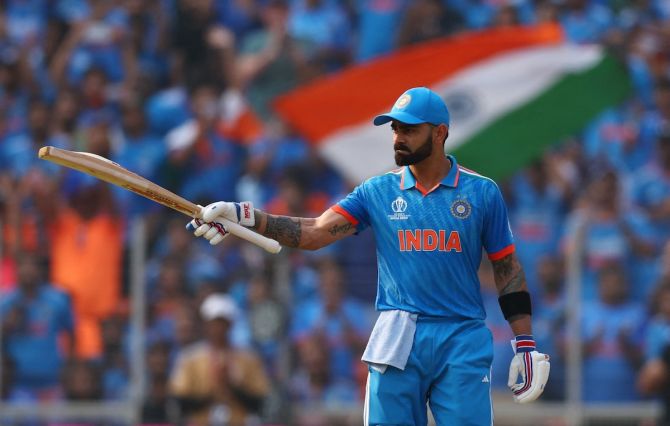Retirement Age In Cricket 2024
Introduction
In the world of cricket, the question of retirement age is a nuanced and often personal matter. Unlike other professions, there is no standard retirement age in cricket. Players make the decision to retire based on a variety of factors, including their performance, fitness levels, injury concerns, career goals, and personal circumstances. This article explores the factors that influence cricketers’ decisions to retire and how the sport accommodates players at various stages of their careers.
Retirement Age In Cricket: Factors Influencing Retirement
- Performance and Form: One of the most significant factors that can lead a player to consider retirement is their performance on the field. Cricket is a highly competitive sport, and players are constantly under pressure to perform. As players age, they may find it challenging to maintain the level of performance required to compete at the highest levels. When a player’s form begins to decline, they may choose to retire rather than struggle with diminishing returns.
- Physical Fitness: Cricket is a physically demanding sport, especially in formats like Test cricket, which can last for five days. As players age, maintaining the necessary fitness levels can become increasingly difficult. Injuries may take longer to heal, and recovery times may be prolonged. Players may decide to retire when they feel they can no longer keep up with the physical demands of the game.
- Injury Concerns: Persistent or recurring injuries can be a major factor in a player’s decision to retire. Injuries can hinder a player’s ability to perform effectively and may lead to a loss of confidence in their abilities. In some cases, injuries can be career-ending, forcing players to retire earlier than they might have otherwise planned.
- Career Goals and Achievements: Many players have specific career goals they aim to achieve, such as scoring a certain number of runs, taking a specific number of wickets, or winning major tournaments. Once these goals are accomplished, players may feel a sense of fulfillment and choose to retire on a high note.
- Personal Reasons: Outside of the cricket field, players may have personal reasons for retiring, such as wanting to spend more time with family or pursue interests outside of the sport. The demanding schedule of international cricket can take a toll on personal life, and some players may prioritize their families and personal well-being over continuing their cricketing careers.
The Role of Experience
While many players retire in their late thirties or early forties, some continue to play well into their forties. Experienced players often bring a wealth of knowledge and leadership to their teams. Their experience can be invaluable, particularly in formats like Test cricket, where tactical acumen and mental resilience play significant roles. Teams may value experienced players for their mentorship and guidance to younger players, even if their own performance may not be as consistent as it once was.
Retirement Age In Cricket: Post-Cricket Careers
Retirement from cricket does not mean leaving the sport entirely. Many retired players transition into other roles within the cricketing world, such as coaching, commentary, or administration. Their experience and insights can contribute significantly to the development of the next generation of cricketers and the sport as a whole.
- Coaching: Many former players become coaches, sharing their knowledge and expertise with up-and-coming players. Their experience as players gives them a deep understanding of the game, making them valuable assets to coaching staff.
- Commentary and Media: Some retired players move into media roles as commentators, analysts, or broadcasters. Their firsthand experience allows them to provide unique perspectives and in-depth analysis of matches and players.
- Administration: Former players may take on administrative roles within cricket organizations, helping to shape the future of the sport through their strategic decision-making and understanding of the game.
The retirement age in cricket is a personal and complex journey for each player. There is no one-size-fits-all answer, as each player’s circumstances and aspirations are unique. Retirement from the game is a significant moment in a player’s life, marking the end of one chapter and the beginning of another. Whether they retire to focus on family, pursue other interests, or transition into new roles within cricket, players leave a lasting legacy that continues to impact the sport long after they have left the field.
Retirement Age In Cricket: For Different Players
Cricket is a sport that requires skill, strategy, and endurance. It is also a sport that presents players with the challenge of deciding when to retire. The retirement age in cricket is not fixed; instead, it is determined by various factors such as performance, fitness, injury concerns, personal aspirations, and life circumstances. This article explores how different cricket players have approached retirement and what influenced their decisions.
1. Sachin Tendulkar: Retiring as a Legend

Sachin Tendulkar, often known as the “Little Master,” had a remarkable cricket career spanning 24 years. Tendulkar’s retirement decision was deeply personal and influenced by his desire to leave the game at the right time. He retired in 2013, aged 40, after playing his 200th Test match at his home ground, Wankhede Stadium in Mumbai. Tendulkar’s decision to retire was driven by his belief that it was time to step aside and allow younger players to take over. His retirement was met with emotional farewells from fans worldwide, marking the end of an era.
2. Jacques Kallis: Transitioning to a New Role
South Africa’s Jacques Kallis is considered one of the greatest all-rounders in cricket history. Kallis retired from Test cricket in 2013 at the age of 38, citing the need to manage his workload and focus on his health. He continued to play in limited-overs formats for a while before retiring from all formats in 2014. Kallis’s decision was influenced by his desire to end his career on a high note and his recognition of the physical toll cricket had taken on his body. Following his retirement, Kallis transitioned to coaching, passing on his knowledge and expertise to the next generation of players.
3. Mithali Raj: Pioneering Women’s Cricket
Mithali Raj, one of the most successful cricketers in the women’s game, retired from international cricket in June 2022 at the age of 39. Her decision was based on her long and illustrious career, spanning more than two decades. Raj had set numerous records in women’s cricket and felt that it was time to make way for younger players. Her retirement marked the end of an era in women’s cricket and paved the way for new talents to emerge. Raj has since expressed interest in continuing her involvement in the sport, potentially through commentary or coaching.
4. MS Dhoni: A Strategic Exit
)
MS Dhoni, known for his calm demeanor and strategic leadership, retired from international cricket in 2020 at the age of 39. His retirement came as a surprise to many, but Dhoni chose to step down on his own terms. He had already retired from Test cricket in 2014, focusing on limited-overs formats. Dhoni’s decision was likely influenced by his desire to allow the younger generation to lead the team and his interest in pursuing other opportunities beyond playing. Dhoni continues to play in domestic T20 leagues and is actively involved in mentoring young players.
5. Ricky Ponting: A Champion’s Farewell
Australian cricket legend Ricky Ponting retired from Test cricket in 2012 at the age of 38. Ponting’s decision to retire was driven by his declining form and the realization that he could no longer consistently contribute at the highest level. His decision allowed him to leave the game with dignity and focus on his family and other interests. Ponting has since transitioned into commentary and coaching roles, sharing his insights and experience with audiences and teams around the world.
6. Wasim Akram: Embracing New Opportunities
Pakistan’s Wasim Akram is considered one of the greatest fast bowlers in cricket history. Akram retired from international cricket in 2003 at the age of 37. His retirement was influenced by the need to focus on his health and family. Akram’s departure from the sport marked the end of an era for Pakistan cricket. Since retiring, Akram has embraced new opportunities, including coaching and commentary, contributing his expertise to the growth and development of cricket.
The retirement age in cricket varies greatly among players and is influenced by a multitude of factors, including performance, fitness, injury, and personal aspirations. Each player’s journey is unique, and their decisions are often shaped by their desire to leave a lasting legacy in the sport.
From Sachin Tendulkar’s emotional farewell to MS Dhoni’s strategic exit, cricket legends have shown that retirement is not just the end of a chapter but the beginning of new opportunities. As players retire, they continue to shape the future of the sport through coaching, mentorship, and other roles, leaving an indelible mark on cricket’s history.
FAQs
At what age will Kohli retire?
Virat Kohli (will play his last wc at the age of 38 which will be the 2027 world cup). So Virat is not at all retiring before that.
At what age do cricket players retire?
Originally Answered: At which age does a cricketer retire? There is no specific age to get retired. But most of the players retire between 35- 40 years, because in these years either players become tired or they lose their form.
Can a 50 year old play cricket?
The experience of many a cricket player as they turn 40 or 50, after playing senior cricket at a high level for decades, in joining Veterans Cricket has meant that their bowling and batting is competitive again.
When did MS Dhoni retire?
August 15, 2020




